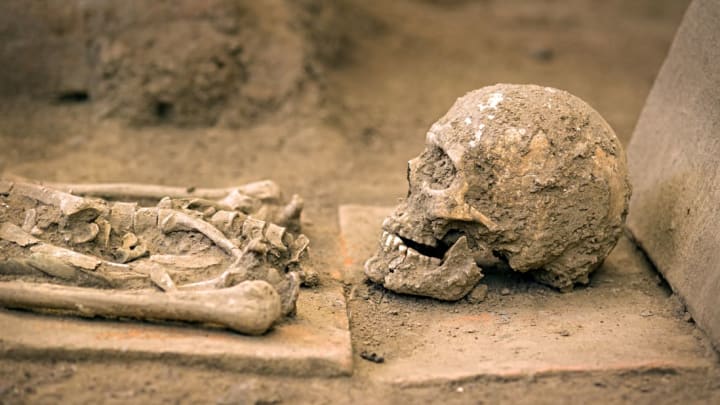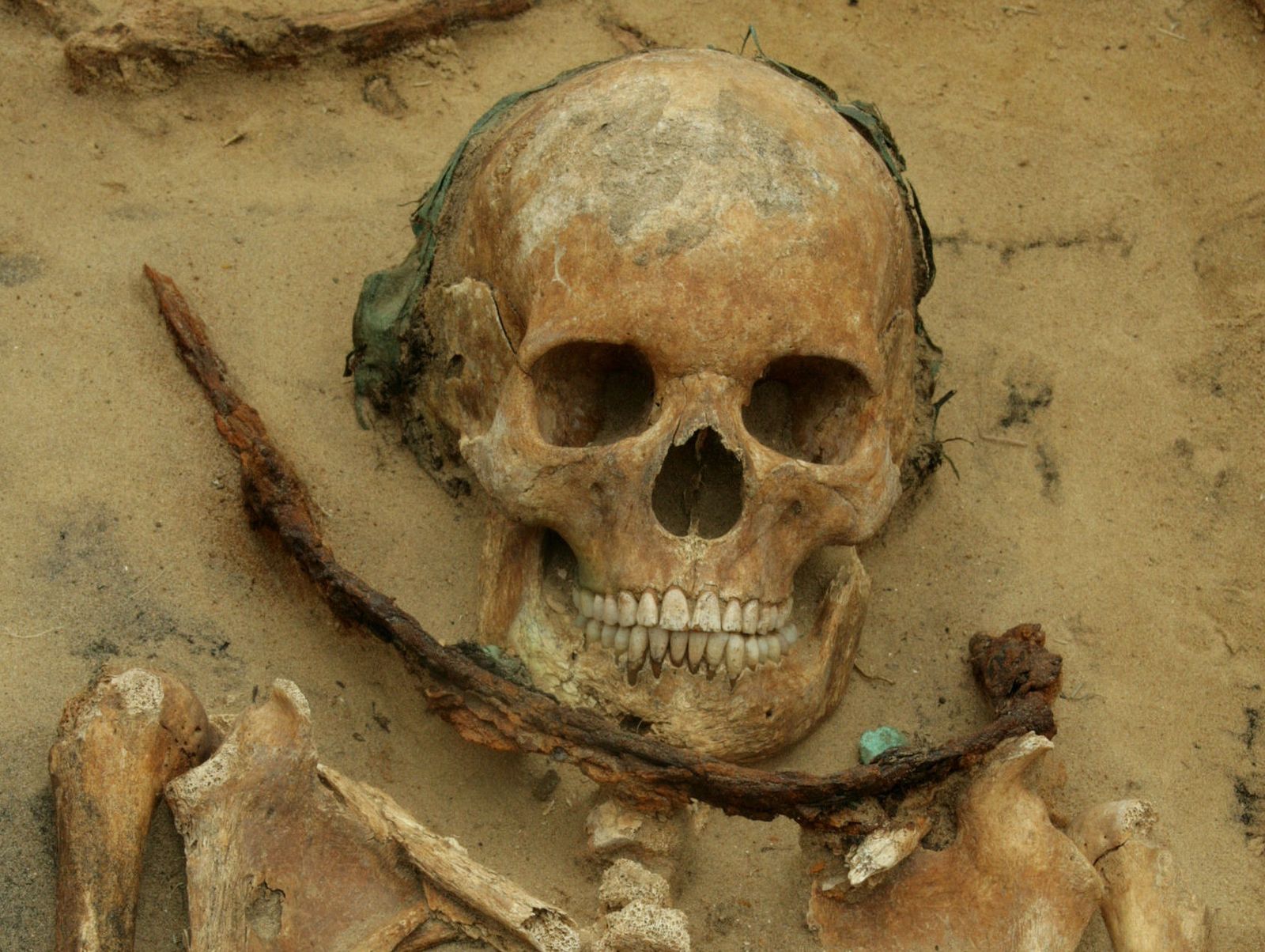The find itself was sensational: the skeleton of a vampire from Kamień Pomorski became famous all over the world. Modern science has shed new light on a deformed skeleton with a piece of brick between its teeth. Thanks to the DNA bandanas it turned out that the Kamien vampire was … a woman.
She was probably a victim of a witchcraft trial. She died during the torture. Researchers do not rule out identifying it. What’s more, researchers from Szczecin also want to digitally reconstruct the appearance of a woman’s face.

The famous “vampire” from Kamień Pomorski in the photo provided to us by Grzegorz Kurek from the Museum of the History of the Kamień Region
The famous skeleton was found in Kamień Pomorski in 2014. During the archaeological work, an unusual burial dating back to the 16th – 17th centuries was found. The archaeologists’ attention was drawn to the unusual features of the remains. A brick fragment was placed in the mouth, and the femur and tibia were pierced right through. The burial was on the edge of the cemetery, a few meters from the next graves. The discovered skeleton, in the opinion of the archaeologist conducting the excavations, could have been an anti-vampire burial in the cemetery, which probably functioned until the end of the 17th century.

Archaeologists have discovered the grave of a medieval ‘witch’ whose boneswere drilled with holes so she could be pinned down with stakes
According to an anthropological analysis carried out after the discovery of the “vampire” remains, they belonged to a man who was about 45-55 years old at the time of his death. He was judged to have dark hair and eyes, and was approximately 160 cm tall. It was considered then that it was the so-called “anti-vampire burial”. A brick placed in the mouth and pegs stuck in the legs were supposed to be an attempt to prevent the deceased person from returning from beyond the grave. The skeleton was then called the “Vampire from Kamień Pomorski”.
In 2017, specialists from the Pomeranian Medical University in Szczecin took care of the vampire again. Their discoveries shed a whole new light on the unusual stone find. Scientists from Szczecin conducted a full panel of research. Starting from anthropological re-analysis through medical and forensic examinations, computed tomography, 3D scanning, ending with the most modern DNA research.

The skeleton is a rare example of the body of a woman accused of being a witch whohad died while being tortured because usually their bodies were burned
The findings of scientists completely changed the previous findings. The biggest surprise was the finding that the skeleton under study belonged to a woman. At the time of death, she was 65 or more years old, nearly 170 cm tall, with blonde hair and blue eyes. The ethnicity was established as typically European (haplogroup H). The injuries that were observed on the lower limb were perimortem, which means that they were inflicted during the victim’s lifetime.
Based on radiocarbon dating, it was possible to determine the age of the burial. Scientists estimated it at the turn of the 17th and 18th centuries. These studies allowed us to come up with a new hypothesis. We are dealing with a woman accused of witchcraft!
Kamień Pomorski was a place where at that time witch trials were carried out by the Cathedral Chapter – says Grzegorz Kurka, director of the Kamień Land History Museum.
The ‘witch’ skeleton was found with drill holes in her bones so she couldn’trise from the dead
The pre-war historian of Kamień, Rudolf Spuhrmann, wrote in his book on the history of the city: “In the second half of the 17th century, witches were fought in Kamień. The chronicles contain reports on many trials before the Cathedral Chapter. The city council had a sober and skeptical attitude towards the whole matter, but towards events did not interfere. ”
King Frederick William I on June 25, 1715 forbade the persecution of witches and condemning them to death, but this practice continued for some time. In the inventory of the Complex of Acts of the Kamień Chapter from 1478-1823 in chapter XXI, entitled Judicalia, under item 544. – “Various documents from witchcraft trials” (German Verschieden processakten betr. Zauberei), 4 trials were recorded that were carried out by the Kamień Chapter . Based on the existing sources, we know that on December 30, 1679, the last judged and burned at the stake was Petra Krügers from Skarychów. However, despite the ban of King Frederick William I, in 1720, Martin Ohmsche from Chrząstowo had a witch trial conducted by the Chapter.
Thanks to the conducted genetic tests and the preserved documents from witchcraft trials, there is a chance to identify a person, so far referred to as “a vampire from Kamień Pomorski”. Now scientists are working on reconstructing the appearance of a woman’s face, using the most modern methods of DNA analysis to determine phenotypic features.





